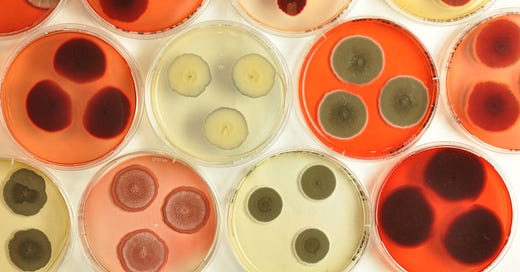Artificial vs Natural Food Colorants
An experiment gone wrong led to a massive discovery. Chromologics spun out of DTU. They naturally produce food colorants using fermentation, tapping into a €4.6B market opportunity.
More and more consumers want to know how their food is made. In response, food and beverage companies are scrambling to replace artificial flavors and colors with sustainable, natural ingredients. In 2020 alone, the market size for natural food colors and flavors was $5 billion and that’s only expected to grow.
My guest today is Gerit Tolborg, the CEO of Chromologics. Gerit describes herself as an accidental entrepreneur. Through an experimental error, she discovered a way to produce natural colors from fungi using fermentation. Listen in as we discuss the business of artificial and natural ingredients, what it takes to spin out an R&D heavy startup from a univeristy setting, and the journey of becoming an entrepreneur when you never thought that was in the cards.
Related Links
💰 Interview with Chromologic's investor Nordic FoodTech VC
🧫 Is artificial really bad? An investigation with artist Alexandra Genis
🏫 How DTU helps startups spin out
🍔 Hey Planet makes burgers from insects
🤑 More interviews with Nordic Food and AgTech investors
Episode Transcript
Analisa Winther, Nordic FoodTech Podcast Host 1:45
I want to start today's conversation a couple years back. Because I read that in 2015, Nestle actually announced that they were going to remove artificial flavors and certified colors from their chocolates in the US. And I think they've done it with some other brands around the world. So, just to kind of open and frame what we're talking about today, why are artificial colors such a big problem for big food companies?
Gerit Tolborg, Chromologics 2:09
I think that started back in the days around 2007 and 2008 with the publication of a study that's now kind of called the Southampton Study. It was the first time that scientists could link ADHD in kids with artificial colors. And that kind of started a debate: how good are artificial colors? Are there health effects that we didn't know about or that we didn't see? And then also the regulatory agencies like the FDA and the EFSA started looking closer at the artificial colors, and they could actually make some connections. They started banning some of the artificial colorants also. And all this created more and more consumer awareness about colorants, which then forced the companies to react to the consumer demands, stop using synthetic colorants and switch to natural ones instead.



